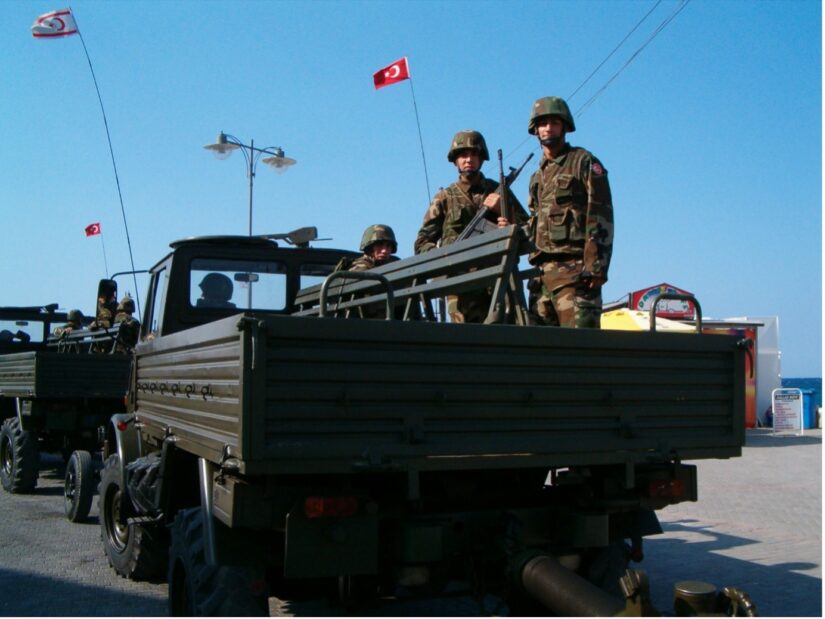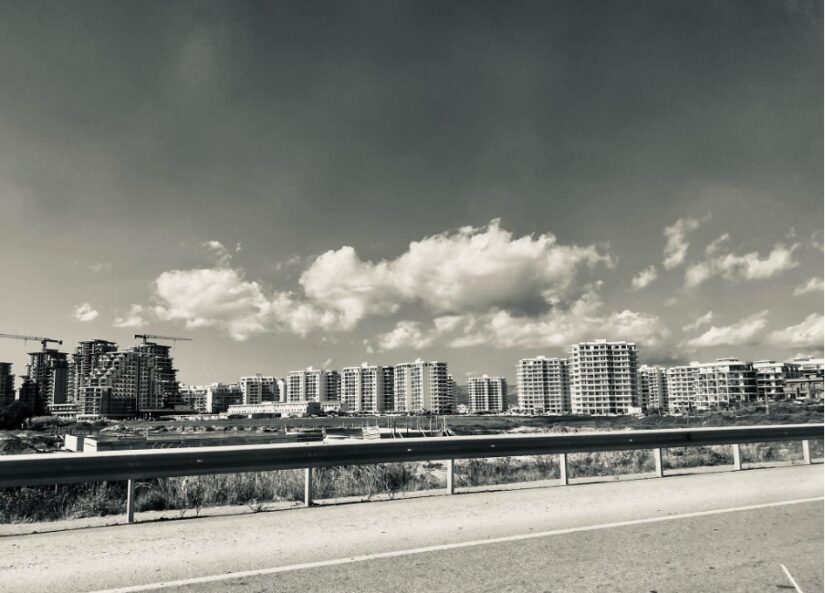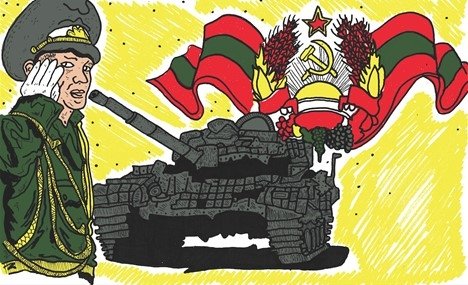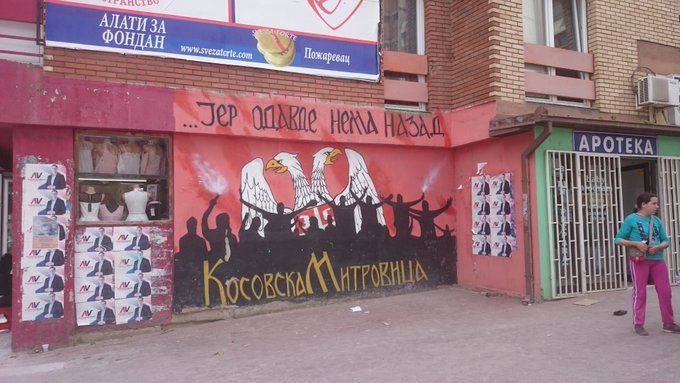Turkish Cypriots and “Demographic Danger”
In March 2024, Bülent Dizdarlı, a respected Turkish Cypriot doctor and former head of the medical association, speculated on his Facebook page that the population of the unrecognised Turkish Republic of Northern Cyprus (TRNC) had reached two million. Two months after that, Resmiye Canaltay, a parliamentary representative from the governing National Unity Party (UBP), asserted that the figure must be at least 800,000. These wildly disparate figures were part of a wave of population speculation that had begun several months earlier, in October 2023, when the Prime Minister, Ünal Üstel, had responded to questions in parliament regarding a proposed five-year development plan.
The questioner had asked him how the right-wing ruling coalition could formulate a plan without knowing the population. His response had been, “We know the population. . . . But there are numbers that can be talked about, and others that can’t be talked about. Some numbers should be left unsaid.” This mysterious response produced an uproar and assertions of very high numbers that the prime minister did not want to reveal. The uproar did not even die down when, in the following month, President Ersin Tatar announced that the number was 410,000. This was in the context of one reporter asking him if the Turkish Cypriot population was shrinking.
Many outside observers find it odd that such a small community does not know its own numbers. Yet what I call elsewhere “demographic danger” has been a fear of this numerical minority for more than one hundred years. The fear that the native Turkish Cypriot population is shrinking and will ultimately disappear can be found in newspaper columns from the early 20th century, when the new Republic of Turkey offered Turkish Cypriots passports and several thousand chose to emigrate. Waves of emigration, especially to the U.K. and Australia, followed in the 1950s and 1960s, during periods of intercommunal conflict.
Since 1974, and especially since the 2003 opening of the checkpoints dividing the island, there has been a steady trickle of return migration. Particularly following Brexit and the U.K.’s recent economic woes, many young Turkish Cypriots born abroad have begun moving to the land of their parents’ birth in the belief that life is easier and safer for their own children and that they will find jobs in tourism, education, and real estate. Yet, the evidence of return migration does not negate the firm belief that young Turkish Cypriots are fleeing and that the population is steadily shrinking.
The danger discourse
How, then, to separate facts from urban legends and figures from myths? To do so, we should first understand the origins of the discourse of demographic danger. In some periods, such as the early 20th century or the conflict years, the fear of losing population and no longer having a claim on the island as a community was a genuine one. In 1923, approximately 17% of the island’s Muslim population emigrated or tried to emigrate to the newly founded Republic of Turkey. During the conflict years of the 1950s and 1960s, everyone had relatives who left for work or safety elsewhere, especially the U.K.
The significance of demography in Cyprus changed after the division of the island in 1974, when Turkish Cypriots received the help of Turkey in creating a space for themselves in the island’s north, one that had been ethnically cleansed of Greek Cypriots. At that time, their numbers were small in relation to the territory that they held, and they needed more population to work the fields, labour in the factories, and assist this new “state” in holding onto its territory. Hence was born a demographic engineering project that entailed bringing Turkish ethnic “kin” from Turkey.
During the post-1974 state-building period, the population expanded by 25% when around 30,000 persons from rural Turkey were brought to the island as “agricultural labourers” but also given empty Greek Cypriot land and citizenship in the new de facto state. Although they were initially welcomed, tensions and clashes soon began, as Turkish Cypriots realized how culturally different these people from rural Turkey were. Although several thousand returned to Turkey, more than 20,000 remained, and their citizenship gave them some say in the way that the new state would be run. This further accelerated the conflict between Turkish Cypriots and “mainland” Turks.
This demographic engineering project was condemned at the time by the United Nations, and the reaction of politicians in the new de facto state was to downplay the numbers or portray the new citizens as Turkish Cypriots who had migrated in the early 20th century to Turkey and were returning to the island. This rather simplistic attempt at obfuscation, while intended for international audiences, also had the domestic effect of making anything that the government said regarding population appear to be a lie.
Moreover, starting in the 1980s, immigration became a political tool during election periods, with some opposition parties claiming that people immigrating from Turkey would soon outnumber Turkish Cypriots and impede their political will. The basis for this claim was the assumption that Turkish nationals who had been made citizens were politically conservative and would vote for right-wing parties. This appears to have also been an assumption of the political right, as they continued to disperse citizenships to Turkish nationals with the expectation of their support in elections. Moreover, while my research shows that these early “settlers” came from various political backgrounds, the left-wing vilification of this group pushed them towards the right, even when many had voted for left-wing parties in Turkey.
An additional problem in this discourse is the confusion of “settlers,” i.e., those persons who were relocated to the island as part of an agreement in the late 1970s between the Turkish Cypriot state and Turkey, with the economic migrants who began to arrive after that demographic engineering project had ended. By the early 1980s, economic migrants from poorer areas of Turkey came seeking work, and opposition parties confused these persons who had no political rights with the “settlers,” i.e., those persons brought to the island after 1974 who were given citizenship.
This confusion, moreover, reflected the confusion of the international community, which also saw every person in the island’s north who was not Turkish Cypriot as an illegal settler, regardless of how and why they had arrived on the island or their citizenship status. This has been especially true of the Republic of Cyprus, the island’s recognized state now governed solely by Greek Cypriots, which saw and still sees anyone arriving from Turkish Cypriot-controlled ports as illegal settlers until they leave the “occupied areas.”
As immigration became a more and more important political tool, especially during election periods, Turkish Cypriot political elite and opinion shapers began to throw out numbers at random and suggest calculating the population on the basis of the number of mobile telephones, cars on the roads, or loaves of bread sold. For these reasons, although various TRNC governments conducted censuses at regular intervals, the results tended to be dismissed by a public that assumed the government was lying to them. Even in the 2011 censuswhich for the first time had international monitors, newspaper columnists and other public figures declared that they would not believe the results unless they showed half a million, even a million—in other words, unless they confirmed the urban legends.
But what is the population, really?
What makes the problem of determining the TRNC’s population even more complicated today is that the number has in fact experienced a significant increase over the past decade since the last census, but the current government refuses to initiate a new count. Instead, Prime Minister Üstel insisted, in the same interview quoted above, that the key was to mechanize the address system, which would allow them to keep track of numbers without a census. This is a dissatisfying answer for people who see the physical and human landscape being altered all around them.
Indeed, even the official number of 410,000 given by President Tatar shows a 40 percent increase in a little over a decade. The population growth rate in the Republic of Cyprus for the same period was less than 10 percent. Yet everyone knows that even this official number is not large enough, because it excludes Turkish soldiers and officers’ families. It also fails to include many undocumented workers and overstayers, large numbers of whom are from Africa, Central Asia, and South Asia. Initiating a census, then, would reveal not only the alarming population increase but also the population makeup, which has become diverse in ways that the government does not appear prepared to manage.

Image: Turkish soldiers in northern Cyprus (Source: Eiki Berg)
Again, history is helpful to understand the problem. As noted above, while the Turkish Cypriot state, in collaboration with Turkey, facilitated the migration of Turkish nationals to the island in the 1970s, since that time immigrants have come of their own volition, usually for economic reasons. In the 1980s and 1990s, most immigrants were labourers from southern and southeast Turkey who came to work in agriculture and production and in the nascent construction sector. After the checkpoints dividing the island opened in 2003, there was a construction boom in the island’s north that was accompanied by an expansion of the tourism and higher education sectors. Since a European Court of Justice decision in 1996 had limited the TRNC’s ability to export products, much of the economy began to focus on importing people, whether as tourists, students, or home buyers.
Moreover, after a U.N. plan to reunify the island failed at referendum in 2004, the neoliberal Turkish government under the Justice and Development Party gradually began to adopt a new policy towards Cyprus, namely, to “develop” its north and make strengthen it in relation to the government in the island’s south. This entailed imposing certain austerity measures on Turkish aid, but it also meant encouraging Turkish businesses to invest in north Cyprus. This new active intervention appeared to many Turkish Cypriots as a threat to impede their political will, and it seemed to be embodied in the large number of Turkish nationals on the island, citizens or not, whom Turkish Cypriots perceived as being allied with their home country’s policies.
This confusion of citizens with non-citizens, settlers with economic migrants, and Turkish nationals with the Turkish government has, in turn, prevented many observers, including Turkish Cypriots themselves, from comprehending the significant changes taking place in the makeup of their population. The expansion of the main economic sectors starting in the early 2000s brought a steady increase in the numbers of people they imported. Turkish capital has supported the development of mass tourism and an exponential growth in tourist numbers. Universities have multiplied and expanded into new markets in Africa, the Middle East, and Central Asia. We may see the remarkable increase in these sectors in recent figures. In 2023, a reported 1.5 million foreigners visited north Cyprus (many from south). In the same year, the island’s north hosted around 110,000 university students.
Moreover, while tourists and students are by definition temporary, foreign homeowners have the potential to alter the makeup of the population when the buyers intend to stay. While there have always been small numbers of persons from third countries (i.e., not Cyprus or Turkey) living permanently on the island, mostly retirees, the 2010s brought an influx of persons from former Soviet countries. They usually arrived as families and appear to see the island as a convenient base where they can live and work but have easy access to their home countries. Since the end of the Covid-19 lockdown period, moreover, a new construction boom has been fuelled by the TRNC’s growing appeal to new markets, particularly Russian, Ukrainian, and Iranian.
Indeed, it is the construction boom, in particular, that is starting to change the makeup of north Cyprus’s population, either because of home buyers or because of the workers needed to build and maintain those homes. In the last seven years, around 60,000 new homes were sold in the TRNC, and most of these had foreign buyers. There currently are a further 15,000-20,000 homes under construction, with prices rising all the time. The number of foreign home buyers increased significantly after November 2022, when the UN voted to impose sanctions on Russia because of its war in Ukraine. Reports are that many buyers pay for homes in cash, and they are able to fly to the island via Turkey, which has not put sanctions on Russia. In addition to Russians attempting to skirt sanctions or avoid conscription, the head of the contractors’ association reports that in the past years the main buyers for property in the island’s north have come from Ukraine, Iran, Kazakhstan, Germany and some Scandinavian countries. Another growing market is among upper-middle-class Turks who either see north Cyprus housing as a sound investment or want to move to the island for its secular lifestyle.

Image: Construction boom in northern Cyprus (Source: Mete Hatay)
Apart from the introduction of these new expats, the TRNC labour market has begun to pull more and more third nationals to cater for the needs of the new economic sectors. Even without a new census, we still have some data that can give us ideas regarding the change in the numbers and the composition of the population. For example, currently there is a registered foreign labour force of 76,000, approximately 40,000 of whom are from Turkey. The remainder come mainly from South and Central Asian countries, such as Pakistan, Bangladesh and Turkmenistan. The number of registered workers from third countries increased from 3,184 in 2011 to 8,703 in 2016 to 36,000 in 2024. On the other hand, the labour force coming from Turkey has increased only slightly, from 30,736 to around 40,000.
The main reason for this change in the makeup of the labour force is the search for ever cheaper workers. That search for cheap labour also has opened up a new pool of workers— the growing university population, which is increasingly composed of students from Africa and other third countries in the Middle East, Far East, and Central Asia. According to the TRNC Ministry of Education, the number of third country nationals studying in the universities has increased from 15,000 in 2014 to 44,539 in 2024, for the first time outnumbering Turkish nationals. Many have been attracted to the island with promises that they will be able to study and work, while others are convinced that they will be coming to a European country. According to the US State Department’s Trafficking in Persons Report for 2022, in many cases foreign students are promised low tuition fees, accommodation and access to good jobs. While some begin work while studying, others overstay on the island, losing their university registration but continuing to work in exploitative positions, mostly in unskilled jobs. Some are forced into prostitution or drug trafficking, while others are smuggled into the Republic of Cyprus.
Conclusion: Whose rights are at stake?
There is no doubt, then, that the population of north Cyprus is increasing and that Turkish Cypriots have become a numerical minority in the territory that they claim as their own. While the current de facto populationis today around 550-600,000, TRNC citizens make only around 230,000, while native Turkish Cypriots number approximately 140,000. Although that large de facto number includes around 40,000 Turkish soldiers, officers, and their families and around 110,000 university students, we also see that these supposedly temporary migrants may become permanent, or at least long-lasting.
This significant change in the number and makeup of the population impacts Turkish Cypriots’ everyday lives, whether in the amount of traffic, the overuse of natural resources, crowding of hospitals, or the general perception that the space where they live is not their own. However, most of these immigrants will not become citizens and therefore do not have a say in running the country. Indeed, one reason that an immigrant Turkish labour force has become less desirable is because Turkish citizens speak the language, know the laws, and have migrant associations that can fight for their rights. They also can access the Turkish embassy in the knowledge that the TRNC is dependent on their home country, which is also north Cyprus’s patron state. Because of these advantages, Turkish citizens are also more easily able to acquire citizenship through naturalization and to overcome any bureaucratic barriers that may stand in their way.
It is precisely this ability of Turkish nationals to fight for their rights and acquire citizenship that has been a strong argument for bringing persons from third countries who are more likely to work, save money, and go home. These are also persons who are more easily exploited. In contrast to Turkish labour, this imported group cannot easily demand higher wages, better safety, or better accommodation. While Turkish nationals may appeal to relatives, friends, and the Turkish embassy when their rights are infringed, a growing pool of labour from third countries such as Turkmenistan, Pakistan, and even Vietnam is defenceless against predatory employment practices.
While the discourse of demographic danger, then, does reflect one reality, that of Turkish Cypriots becoming a de facto minority, it does not reflect the other reality, that of Turkish Cypriots still maintaining some kind of political control and the power to exploit third country nationals who have no means to fight for their rights. In the end, then, mystifying the population serves not only to win more votes. It also serves a system of exploitation in which the exploited appear as a danger rather than as persons who themselves are endangered.
Author: Mete Hatay




